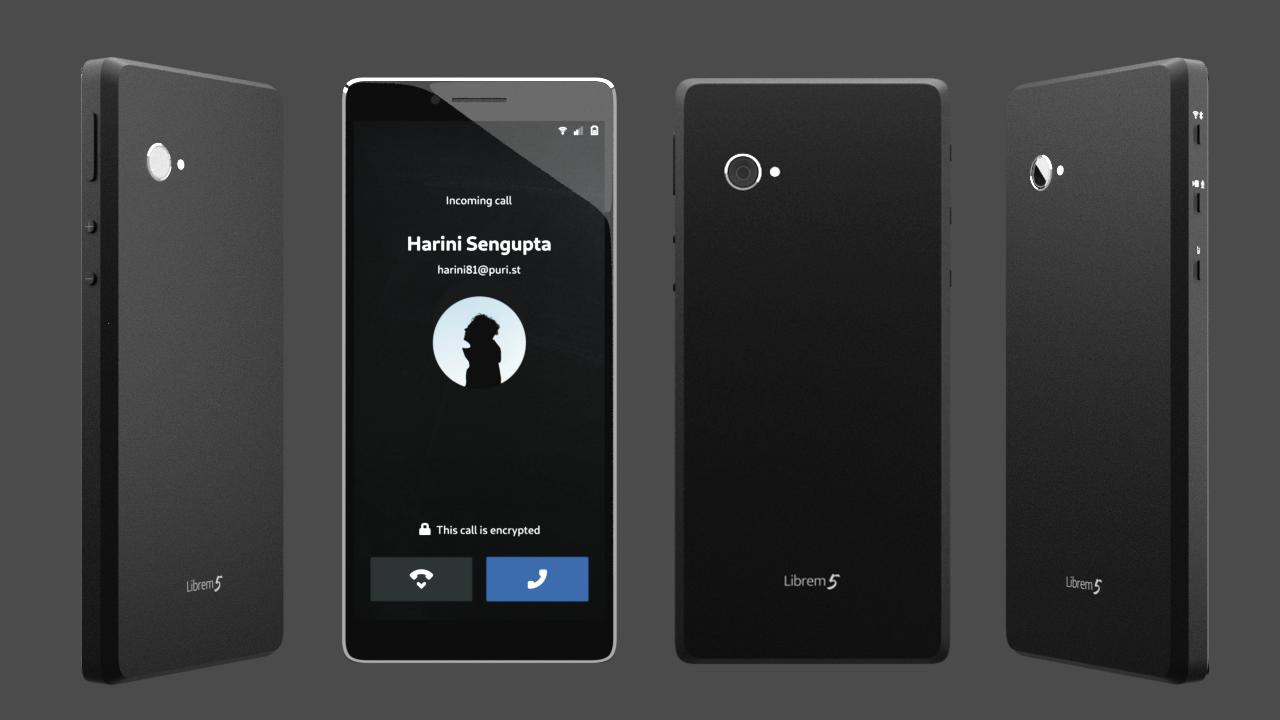Librem 5, an open-source Linux phone
We all recall the failed attempt by Canonical to crowd-fund a
phone that would run Ubuntu Touch. More recently, another group had a
go, a company named Purism. Their crowd-funding proposal was for the
Librem 5, a phone that would run PureOS, their security-focused flavour
of Linux.
Purism aimed for at least US$1,500,000, but reached US$2,479,000, so a
success, and the project was underway. Crowd-funding page here:
https://puri.sm/shop/librem-5/
I was initially interested, but then it seemed that they were going
to use the NXP i.mx6 CPU, which is 32-bit and very long-in-the-tooth.
So, I lost interest, but it got piqued a few times, when there were some
interesting announcements that came to my favourite Linux news site,
lxer.com
A couple of those news items were that UBPorts, the team who are
continuing to develop Ubuntu Touch after Canonical dumped it, signaled
their intention to port to the Librem 5 phone. Also, the developers of
Plasma Mobile, another Linux-based phone OS, will be doing the same.
So, there will be a choice of three OSs, most interesting.
I found out just a couple of days ago, all the latest happenings, at their blog:
https://puri.sm/posts/tag/phones/
They delayed the project a bit and decided to go for the i.MX8M CPU, a
somewhat more modern and power-efficient 64-bit chip. That got me
interested again. However, this chip is not really designed for phones,
and does not have a modem (to provide the 2G/3G/4G connectivity). The
modem has to be a separate chip, and I looked up the specs on the modem
chip that will be shipping with the developer-kit, and it lacks 4G
700MHz (B28), a frequency extensively used by Telstra here in Australia.
So, interest waned again. However, I then read something most
interesting, that the modem will plug into an m.2 socket in the phone,
so they will be able to provide the right one for different regions of
the world. I don't know if it is quite that simple though, as the
antennas have to be tuned.
I was also pleased that they decided to go for a bigger screen.
Originally, it was going to be 5 inches, but they have now upped it to
5.5 or 5.7, with 18:9 ratio.
I don't know if this phone will ever become more than a toy for
developer-nerds like myself, but I decided I'm in. I contacted them
after the deadline had expired for ordering the dev-kit, but they
reckoned that they could find one extra for me, and accepted my late
order.
Note for anyone else who wants to get involved as a developer: you
will have to wait until the phone arrives in January (or more likely
later, based on my previous experience with crowd-funded projects). The
dev-kit is just a one-off production-run, and it is intended that
development can be on the phone itself after it arrives.
So, a i.MX8M-based board, costing US$399, which came to AU$527, due in August/September ...so, I guess that I will have to pay GST when it arrives here. Specs are here:
https://puri.sm/posts/june-1st-last-call-for-librem5-devkit/
Here is a recent render of what the phone will look like:

This is the layout of the dev-kit:

I am intrigued that the dev-kit is pretty much what will be in the
final phone, and that everything is going to be open-source, with all
hardware specs published, and lots of guys working on getting the
hardware to play nice with Linux.
I wonder how many of those interfaces will end up in the phone ...notice the smartcard socket.
My plan, after the dev-kit arrives, is pretty wide-open at this stage. Lots of learning to do of course.
Tags: tech
